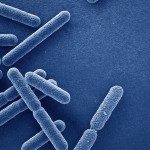Présentation
Abstract:
The brain is exposed to a number of pathogens able to cross its protective layers and reach brain host cells. This invasion can lead to fatal outcomes and to long-term neurological disabilities in surviving infants and adults. So far, little is known about upstream mechanisms underlying these consequences. How pathogens overcome the complexity of an in vivo barrier also needs further understanding.
We propose to use the unrivalled power of Drosophila genetics to decipher these events. Many basic aspects of mammalian brain development are conserved in the Drosophila larva through the existence of genuine neural stem cells and their niche, which includes several glial populations and a blood-brain barrier.
We have now set up a model of brain infection in Drosophila and identified a number of mammalian pathogens able to cross its blood-brain barrier. Amongst them, Group B Streptococcus (GBS) is a major cause of meningitis in the newborn. Our results first identified GBS surface lipoproteins as a key factor for blood-brain barrier crossing, and discovered a new mechanism by which the pathogen exploits host barriers to generate brain infection. Moreover, we monitored how brain cells were affected upon GBS infection, and discovered that stem cells and differentiated progeny react in different fashion, a striking consequence. Further characterization of this response will shed light on how neurogenesis is affected under infection-borne stress.
Localisation
Bâtiment: Centre François Jacob
Adresse: Institut Pasteur, Rue du Docteur Roux, Paris, France


